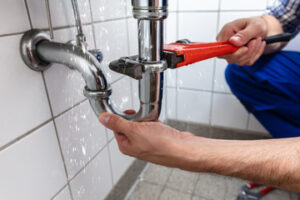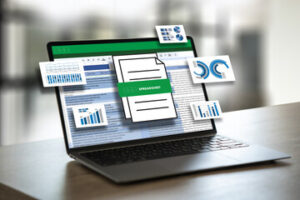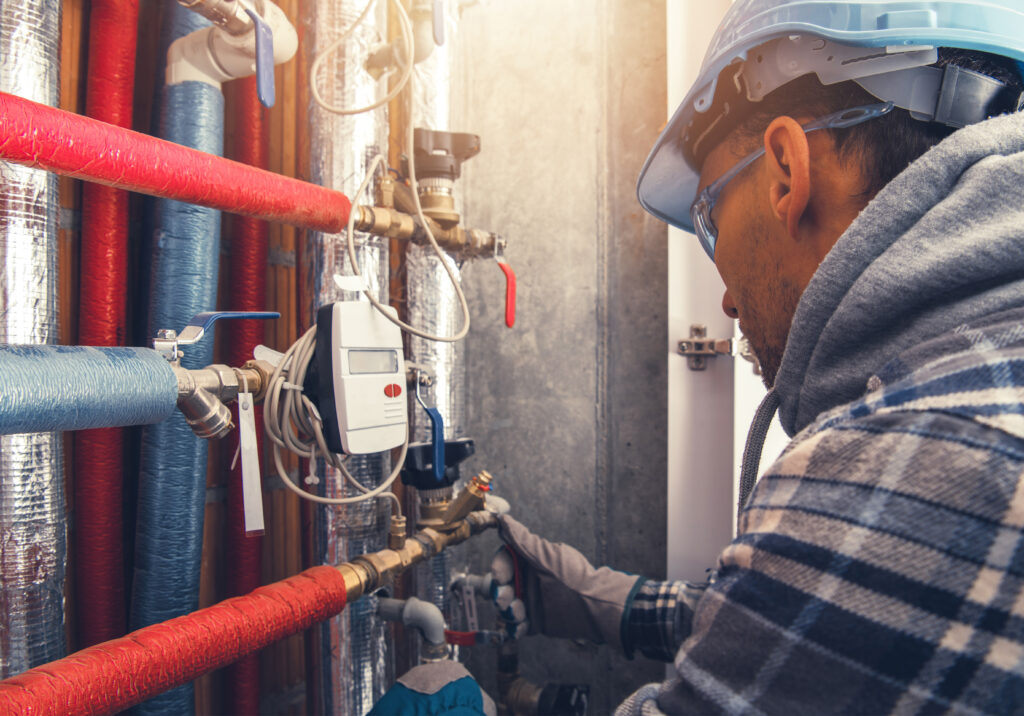We take plumbing for granted, but it’s been an important part of civilization for centuries. It was responsible for public baths, fountains, and sewage removal.
Traditional plumbing can also be messy, directly contacting plumbers with dirt and sewage. Plunger Plumber is quicker and more hygienic.

If you’re building a new home or remodeling an existing one, plumbing manifolds are an important part of your overall system design. These plumbing components act as crucial control mechanisms for hot and cold water circulation. They can be made of conventional copper, brass, bronze, or more technologically advanced materials such as PEX/cross-linked polyethylene. Regardless of the type of material used, they offer clear utility for any homeowner.
The plumbing manifold is an intersection point for all the pipes in your home or commercial facility. Cold and hot water enters the manifold via 3/8-inch or 1/2-inch branch lines that connect to various fixtures throughout your house. These tubing connections are also fitted with valves that allow you to shut off the water supply to specific institutions in case of a problem.
In traditional plumbing systems, a main artery — usually a large-diameter copper pipe — takes water to every room or fixture in your home before it branches off again to smaller, individual branches. The result could be more efficient energy and water use. Plumbing manifolds provide a more efficient alternative, allowing each fixture to get its dedicated supply of hot or cold water without the larger-diameter, long-run pipe requirements of traditional plumbing.
Depending on the type of system you have, your plumbing manifold may be outfitted with copper, PVC, or even PEX tubing. While these are all reliable, high-quality materials, PEX offers a few additional benefits that can make it the better choice for your manifold systems. For example, modern PEX plumbing systems feature safeguards that reduce the likelihood of pressure drop and require less components. They also resist freezing during the winter.
In addition to the obvious convenience of being able to turn off water to individual appliances, manifolds help plumbers by reducing the number of joints in the system. This is one of the most common places for leaks to occur. A single joint in a copper or PVC line can be difficult to repair and is vulnerable to corrosion over time. This is why fewer joints mean a more reliable plumbing system.
Like smartphones, TVs, watches and thermostats, home plumbing fixtures are now becoming smart. From water filtration systems to digital faucets, these smart technologies allow homeowners and property managers to connect their plumbing to the internet for better control and more efficiency. However, it’s important to choose the right system and install it properly for maximum benefits.
Incorporating smart technology into a plumbing system can help prevent expensive repairs due to water leaks and conserve resources in the process. These systems are designed to detect early warning signs of water leaks, alert users to high-usage habits, and provide data on water usage.
These devices can be installed in residential or commercial buildings to monitor and manage water consumption. They can be connected to a building’s plumbing infrastructure through sensors that are able to communicate with each other to identify any anomalies, such as a water leak or abnormal water usage. The data is transmitted to a central server, where it can be analyzed and delivered as real-time insights to the user. This allows plumbers and facility managers to predict maintenance needs, respond faster, save energy and water and improve occupants’ comfort and quality of life.
Among the most popular smart plumbing products are water filtration and monitoring systems, smart toilets, and connected showers. These technologies allow users to customize their settings, such as temperature and pressure, for a more personalized experience. Smart toilets can also be programmed to automatically flush after a certain amount of time, saving both water and money.
A key benefit of these products is that they can be controlled remotely through a smartphone application. Users can adjust the settings of their toilet, shower, or sink and even set schedules for appliances such as washing machines and dishwashers. They can also monitor their water usage and see how much they are using each month, allowing them to cut back on waste.
If you’re interested in integrating smart technology into your plumbing system, contact our licensed Cincinnati plumbers for more information on the best products to fit your home or business. We can help you find the perfect solutions that will keep you safe and comfortable while improving your home’s energy efficiency.
Green plumbing is the practice of installing eco-friendly systems in place of old and wasteful ones. The main allure of this type of system is its lowered impact on the environment, but it also saves you money on energy and water bills. It includes modifications such as low-flow toilets, high-pressure showerheads, usage meters and more. A more comprehensive green plumbing solution involves installing solar hot water systems, rainwater tanks and even tankless water heaters. These are more expensive upfront, but they pay for themselves in just a couple of years.
Green plumbers are trained to use new and innovative technologies that can help decrease your environmental footprint. They are skilled at finding low-flow suppliers and parts that can greatly lower your plumbing system’s overall energy consumption.
A common misconception is that using green plumbing will lead to higher utility bills, but this is not always the case. By reducing your water consumption, you will reduce the amount of energy it takes to heat and transport that water to your home or business. This will lead to lower energy costs in the long run, and you will still be able to enjoy all the water services you need.
In addition, green plumbing solutions can prevent damage to the environment and extend the lifespan of your appliances. For example, brain pipes are a green plumbing technology that works by constantly monitoring your water pressure. If there is any leakage or any other problem, the system will automatically shut off your water supply and alert you to the issue. This will prevent any water damage to your property and ensure that you have a safe and secure plumbing system.
With water shortages and climate change becoming a major concern for many people, it becomes everyone’s responsibility to protect the Earth’s natural resources in their own small way. Switching to green plumbing is one of the easiest ways to do this. Green plumbers have undergone extensive training to understand how to install eco-friendly systems and provide their customers with the best advice.
If you’re looking to reduce your environmental footprint and save money, a green plumbing solution can be the perfect choice for your home or business. Contact your local green plumber to learn more about the options available to you.
A traditional plumbing system consists of two subsystems: the one that brings fresh water in and the other that takes wastewater out. The water supply pipe that brings clean water in typically enters the house through a meter and is shut off when you are not using water. The main water shut-off valve is usually located near the meter. In an emergency, this can save your home from a flood or help you avoid costly damage from burst pipes.
In addition, plumbing systems typically use a series of straight sections called pipes or tubes to carry the water. Pipes can be made of a variety of materials, such as iron, copper, galvanized steel, and plastic. In general, pipes with thicker walls are welded or screwed together, while tubing is joined using methods like brazing, compression fitting, crimping, or for plastics, solvent welding. Pipes can also be fitted with a variety of valves, which allow you to control the flow and direction of water.
As the population grows and water becomes scarcer, it’s important to use less of this precious resource. This is why eco-friendly plumbing techniques are becoming so popular with homeowners and businesses alike. These techniques can be used to reduce your water usage without sacrificing comfort or convenience.
The most obvious way to reduce your water usage is by replacing older fixtures with high-efficiency models. A licensed green plumber can recommend and install a variety of energy-efficient fixtures. These devices can save you up to 30 percent in household water usage. This can lead to big savings on your water, sewer, and energy bills.
Another way to conserve water is by installing rainwater harvesting systems. These systems collect and store rainwater for non-potable uses, such as irrigating gardens or flushing toilets. Plumbing professionals can also help you design and implement greywater recycling systems, which are a great way to reuse wastewater from showers, sinks, washing machines, and dishwashers.
Water conservation is not a new concept, but it’s becoming increasingly popular and important as the world’s water resources are stretched to the limit. It is a simple way to help the environment by cutting down on waste and helping your local water utility company reduce demand for raw water.



